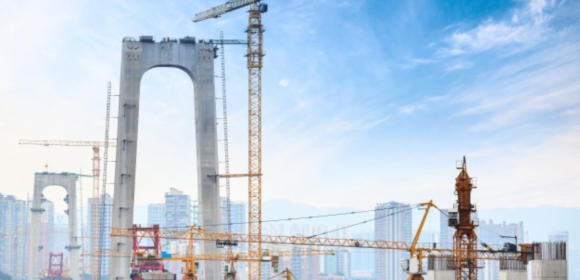

There will be moments when even you have successfully established a business, you will still need help from other businesses.
Case in mind, there will be other things you cannot simply afford to buy and put in your business, therefore, you need to at least borrow from someone else. This is very common most especially when the business is just a start-up, some equipment are too expensive, or there is just no long-term use for the equipment in your business.In this case, you will need to lease an equipment from other companies or business entities that offer the equipment that you need.
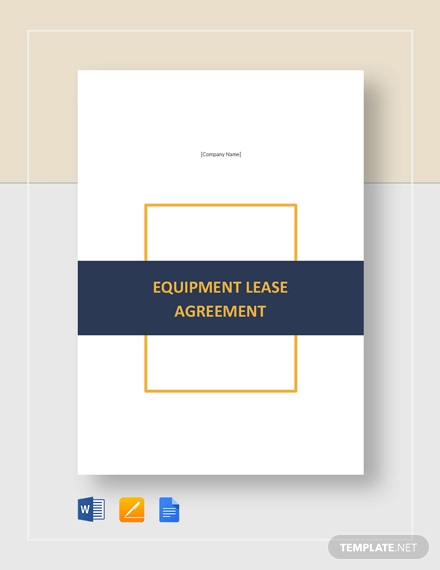
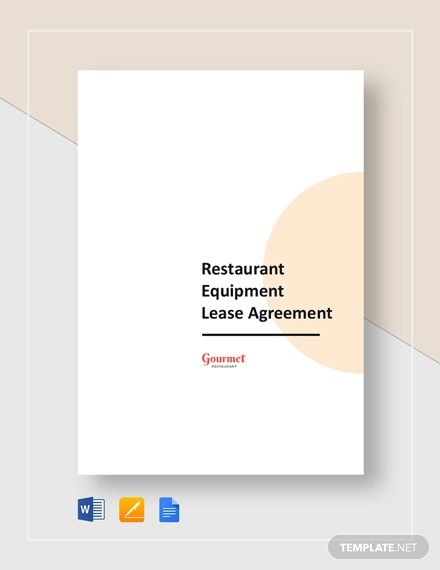
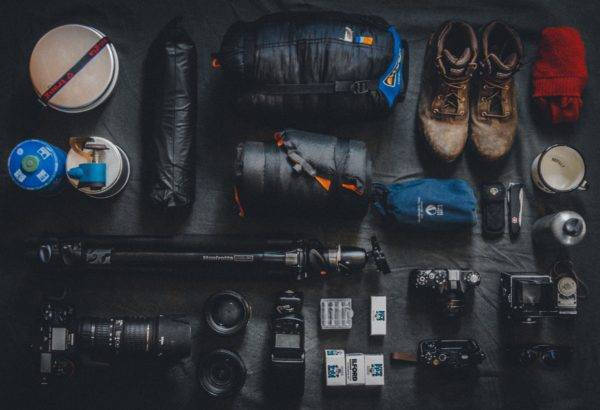
Equipment lease agreements are not only related to business-related tasks. For example, if you decide to renovate your backyard on your own but you or your family and friends don’t have the heavy equipment that you need to continue on with the process, there are businesses that offer equipment for lease.
In that case, you will still need to make or sign an equipment lease agreement that can help protect your rights as a lessee as well as the terms and conditions that will be favorable to both you and the lessor. You may also see purchase agreement examples.
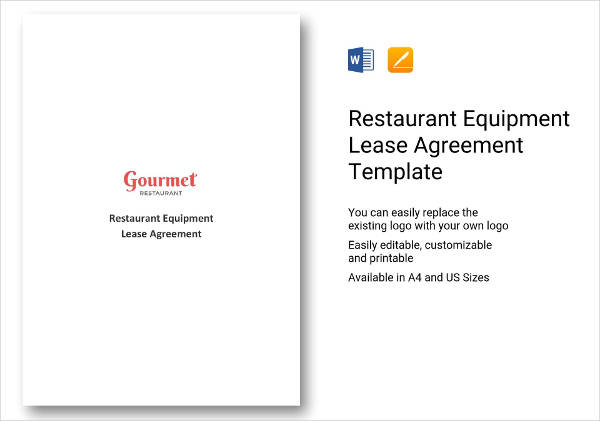
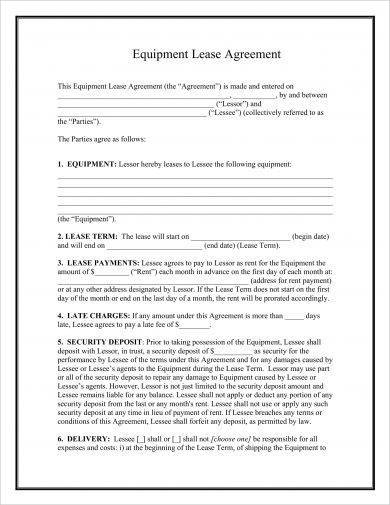
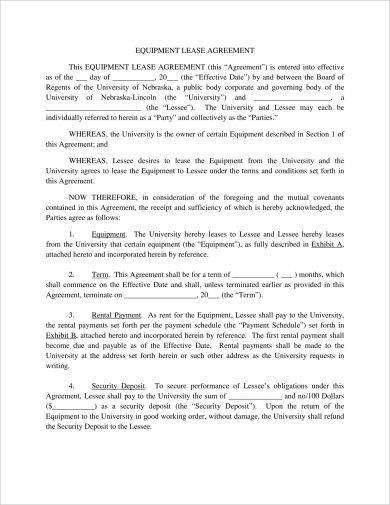
Basically an equipment lease agreement is a simple agreement where the lessor or the owner of the equipment agrees to lease an equipment to a lessee or borrower in exchange for periodic lease payments. The equipment to be leased can be machinery or vehicles of any other equipment. The lessee is given the right to possess the equipment for a certain period of time in return for periodic payments.
However, the rightful ownership of the equipment remains with the lessor. Listed below are the common contents or elements found in an equipment lease agreement:
Declaration by the lessor that he is either the owner of the property or is duly authorized by the owner to give the property on lease
The effective date of commencement of the rent agreement and the duration Term of the lease The lease rent and the mode of paymentSecurity deposit amount paid, whether it is interest-free or not, and the circumstances when it is refundable
Advance rent payable, if any, and the mode of its adjustment Rent escalation clause – when can the rent be increased and at what rates Facilities to be included in the rent Who has access to the common and garden areas Who pays the municipal dues, property taxWho bears the maintenance expenses – both for minor and major repairs – and what exactly are minor and major repairs
Whether the fixtures and fittings would be provided by the lessor What are the grounds for termination of the agreement Notice period required for termination of the lease In case the lease deed needs to get registered, who will bear the registration expenses Renewable clauses Details of parking space Details of terrace rights
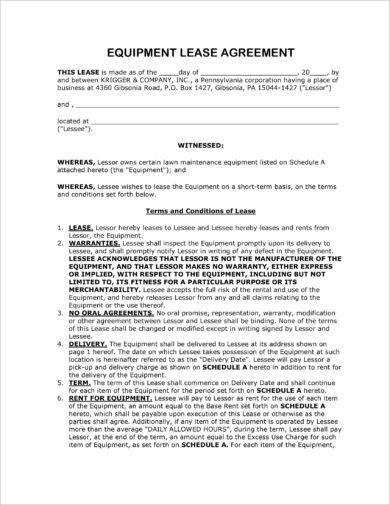
When you have decided to enter a lease instead of buying the equipment yourself, you should expect the following steps in the process:
1. The first step is you having to complete an equipment lease application. You may be required to hand out upfront or after the initial completion of the application the financial data for both the company and its principles.
2. The process of your application as well as the result is given by the lessor, they are responsible for notifying you about the matter. The notification usually happens within 24 to 48 hours of submitting the formal application.
3. You must immediately review and finalize the lease structure once the approval is received. The lease structure must include the monthly payments and the fixed-rate APR. You will then sign the documents and resubmit them to the lessor, normally along with the first payment. You may also see commercial agreement examples.
4. You will be notified that the lease is in effect and that you are now allowed to accept delivery of the equipment and start any training, if necessary after the lessor has received and accepted the signed documents and first payment. You may also like rental agreement letter examples.
5. Within 24 to 48 hours, funds are directly released to you or the manufacturer you are purchasing from.
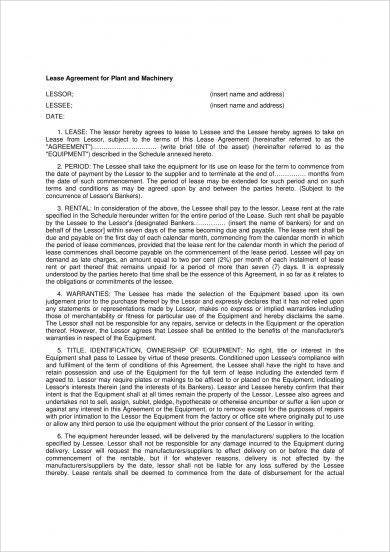
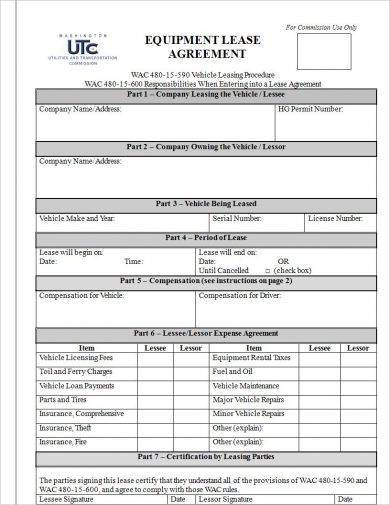
Although there are terms and conditions included on the simple agreement, there are still circumstances when you have to immediately get out of the lease agreement. Some of the most common reasons why lessees decide to break the equipment lease agreement before the end of the lease term is because the equipment is not functioning as it is supposed to or reoccurring defects on the equipment.
If that is the case for you or you have other reasons why you need to break or get out of the equipment lease, here is a guide to help you:
Factors that can allow you to break the agreement:
Some contracts and/or agreements are voidable or can be canceled if these situations or aspects are present:
For example, if your lessor promised that the equipment you leased is in good condition but it failed to function as it was supposed to, so you complained and was duly replaced with a new equipment. Therefore, your issue was addressed and given the right solution. You may also see business agreement examples.
However, as the time has passed you no longer have use for the replacement and you want to just get out of the lease. If you personally guaranteed the lease, it will be tough to get out of the contract. However, you can still try and use these defensive measures: